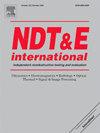The fusion of lock-in phase images for the damage investigation in composites materials
Abstract
Lock-in thermography (LIT) is a type of active thermography capable of detecting and evaluating the subsurface defects in composite materials. The phase or amplitude difference between the defect and sound regions can quantitatively determine the size and depth of defects. One limitation of LIT is that the optimal identification of defects located at specific depths is dispersed within phase images acquired at varying excitation frequencies. If the depth of the defects within the specimen is unknown, it is difficult to determine the excitation frequencies to achieve optimal contrast for all defects and display them in a single image. To address this challenge, a multi-frequency fused method based on lock-in thermography is proposed to improve the quality of defect detection. Initially, the optimal thermal wave excitation frequencies and the number of detection times are determined based on the theoretical solution. Subsequently, phase images at various excitation frequencies are extracted and enhanced using a specified scheme. Finally, we develop an unsupervised encoder-decoder network that combines dense connections and residual modules to fuse these phase images into a single image containing defects at various depths. An experiment is conducted to detect carbon fiber reinforced polymer (CFRP) laminate containing defects with different depths and sizes. The results demonstrate that the proposed method can broaden the detection range of defect depths and improve the quality of the inspected images, providing superior performance compared to traditional sequential image processing methods.

 求助内容:
求助内容: 应助结果提醒方式:
应助结果提醒方式:


